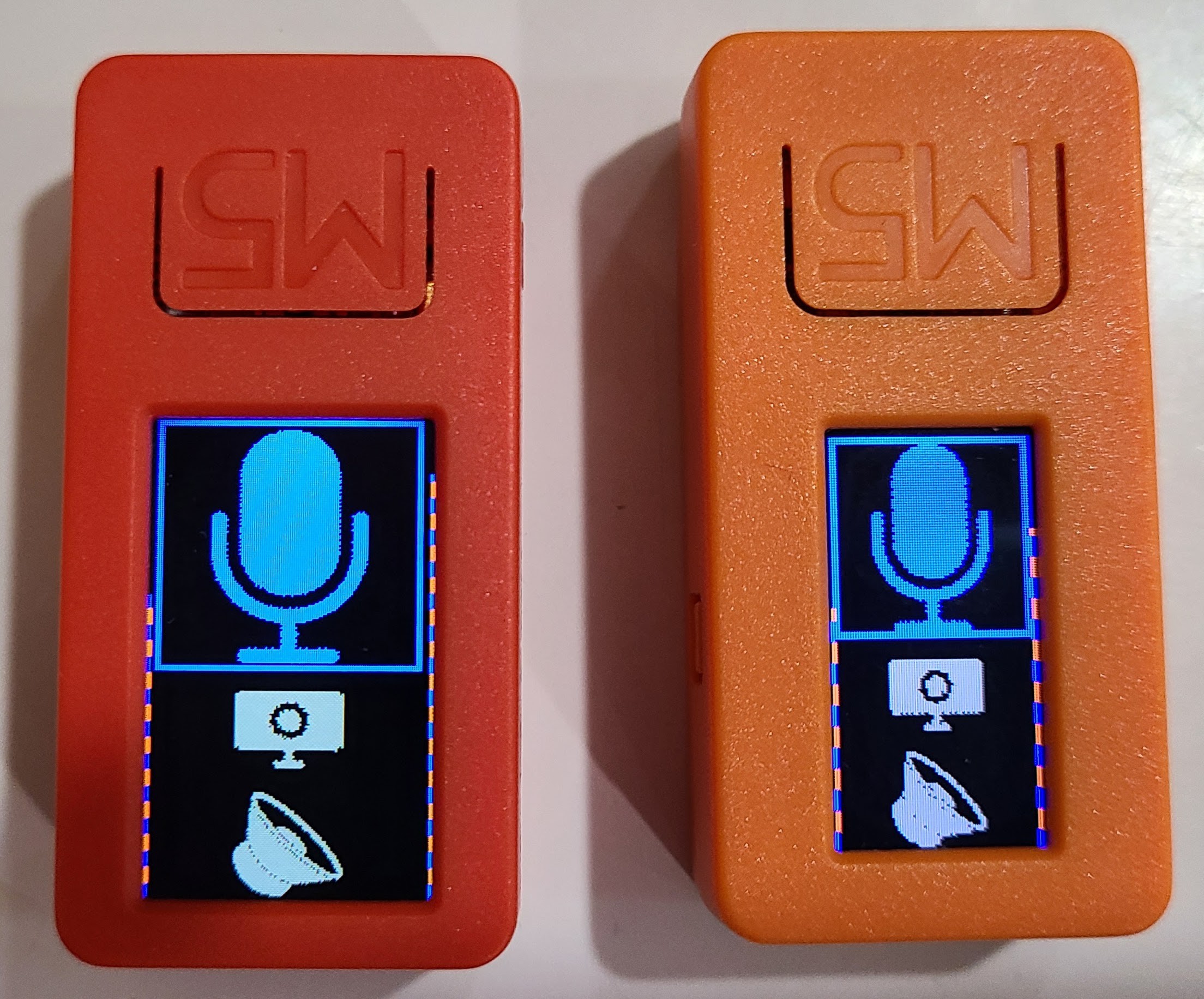I've pretty much finished fooling around with the firmware on the M5StickC. It's been great fun clicking the buttons and seeing the AHK pop-ups on my computer screen, but I now want to work on making AHK actually do the things it says in the pop-ups.
I got a M5StickC Plus, which has a larger display, and adapted both of the screen renderings to the larger size. The code now runs fine on either kind of device, but you do have to say which it is in a RemoterMCSconfig.h before building and uploading the firmware. They use different TFT video controller chips. I don't think it's technically possible to have one firmware that serves both devices. If I ever figure out a way to do that, I can eliminate the configuration step.
Here is a photo comparing the two devices, M5StickC Plus on the left, M5StickC on the right. (I don't know if they are intentionally different shades of orange or if it's just variation from different manufacturing runs.) For both displays, the dashed vertical bar on the right side is the battery indicator. The stripe on the left side is Received Signal Strength Indicator (RSSI) of the connected computer. The RSSI varies quite a bit, but it does give a coarse indication of strong or weak signal. (I don't understand why, but it seems a Bluetooth server, which is what these are, must ask the Bluetooth client for its RSSI value. Since both ends are receiving signals, I expected to be able to ask my radio what RSSI it had seen. But, apparently not.)

One thing I have to come back to and hope to improve is battery life. There's a lot I don't know about Bluetooth LE, even though I know a lot more today than I did when I started this project. I want to figure out how to put the ESP32 into light or deep sleep most of the time to save power. I know how to do that, but it kills my Bluetooth conversation with the computer. This could be something that needs a code change in the ESP32-BLE-Keyboard library, or it may be something I can overcome with other BLE or ESP32 calls in conjunction with that library. I have to study that some more.
My simple battery longevity testing was disappointing, but fairly conclusive. Regardless of how much delay() I put into each iteration of the Arduino loop(), the lifetime of the M5StickC battery is between 40 and 50 minutes. It's not too surprising that the amount of delay() doesn't matter too much since the processor continues to run at full speed. On the ESP32, delay() just makes an RTOS call to suspend the foreground task for that amount of time. The clock keeps ticking.
I repeated the longevity timing with a modified program that didn't do anything with the Bluetooth radio. It wasn't even initialized. I got between 110 and 120 minutes that way. More than double, less than triple. It gives me some encouragement that if I can crack the light/deep sleep puzzle so I can continue BLE when I wake up, I should be able to get a lot of battery mileage. When starting from scratch, it can take from 1-10 seconds to establish the Bluetooth connection, which is pretty unacceptable for this use case.
I just need to figure out how the Bluetooth remote control folks do it. I'm sure their devices sleep most of the time. I paged through the BLE documentation intended to facilitate the low power part, but there's a lot of jargon and a lot of layers of APIs, so it's taking me a while to match things up. I haven't yet come across a good example, although there are plenty of examples that don't worry about power.
EDIT: I figured out how the remote control people do it. They use more special purpose Bluetooth chips that are optimized for it. The ESP32 will probably never be able to be that efficient, but it should be able to do a lot better than it does for me right now.
 WJCarpenter
WJCarpenter
Discussions
Become a Hackaday.io Member
Create an account to leave a comment. Already have an account? Log In.